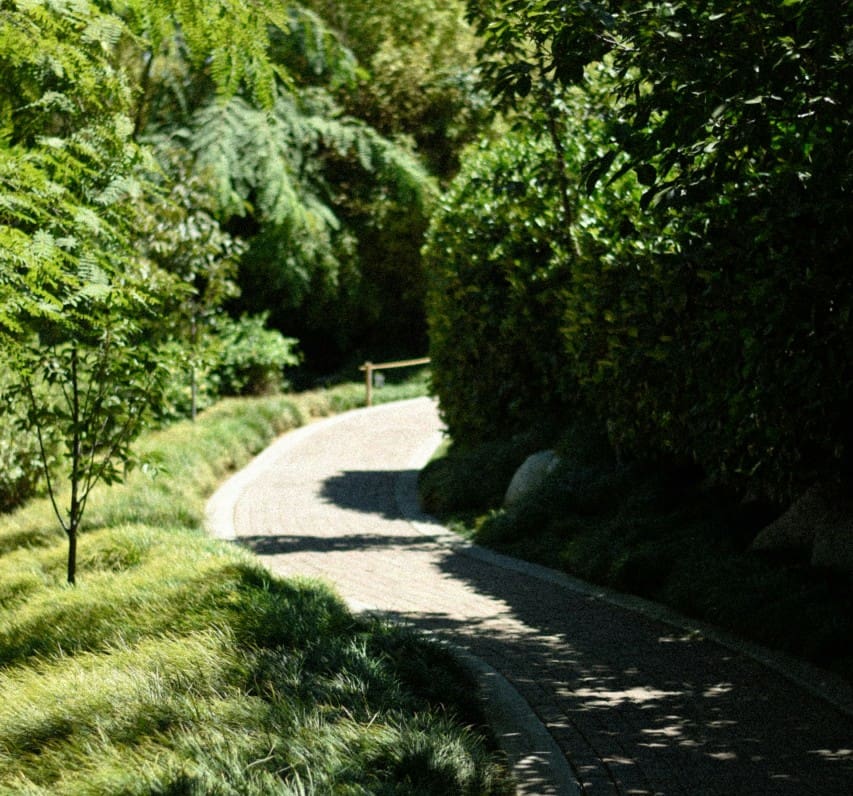This Year, Enjoy the Benefits of Professional Backyard Trail Maintenance
A backyard trail offers more than just a walkway—it’s a peaceful escape, a playful route for children, and a scenic feature that connects your outdoor spaces. Whether you’ve designed a winding garden path or a wooded walking trail, regular backyard trail maintenance is essential to keeping it safe, beautiful, and functional year-round.
Need help maintaining your home trail? Call Borst Landscape & Design at (201) 822-9327 orcontact us onlineto schedule a consultation today!
Why Backyard Trails Need Regular Maintenance
Trails and pathways experience wear and tear from foot traffic, weather, and seasonal debris. Without upkeep, they can become overgrown, muddy, or even hazardous. You need a proactive, professional approach to backyard trail maintenance, focusing on beauty, durability, and long-term performance.
With the right care, your backyard trail can remain an inviting feature that enhances your property’s value and charm.
Routine Maintenance Checklist
Backyard trail maintenance involves more than clearing leaves. Here’s what it takes to preserve the quality and appeal of your path:
1. Clear Debris Regularly
- Remove fallen leaves, twigs, and pine needles weekly.
- Sweep or blow off gravel, stone dust, or mulch surfaces.
- Check for moss buildup on stone or brick paths that could create slippery conditions.
2. Trim Encroaching Plants
- Prune back overhanging branches and shrubs that block sunlight or narrow the trail.
- Cut back invasive groundcovers and grasses that creep onto the path.
- Maintain at least 12–18 inches of clearance on either side for ease and safety.
3. Replenish Trail Surface Material
- Add fresh mulch, gravel, or crushed stone annually to keep your surface smooth and even.
- Rake and level materials to correct uneven spots and improve drainage.
- For natural soil paths, consider compacting and edging to reduce erosion.
Control Drainage to Prevent Erosion
Water is one of the biggest threats to any backyard trail. Poor drainage can lead to erosion, pooling, and surface degradation. Your landscaping team will design trails with natural slope and flow, but even well-built paths need seasonal adjustments.
Drainage Tips:
- Keep side ditches and swalesclear to divert water away from the trail.
- Repair any low spots where water collects.
- Add permeable edginglike natural stone or brick to direct runoff without blocking it.
We also recommend incorporating native plants around your trail edges to help stabilize soil and improve absorption.
Maintain Structural Elements
Many backyard trails include built-in features like steps, bridges, retaining walls, or edging. These elements not only define the trail but also ensure safety—especially on uneven or sloped terrain.
Inspect and Repair:
- Check wooden structures for rot, splinters, or loose boards.
- Tighten or replace rusted nails and bolts.
- Clean stonework or pavers to remove algae and keep a non-slip surface.
- Re-set or replace edging that’s shifted or sunken.
A few small repairs each season can prevent costly replacements down the line.
Address Seasonal Needs
Each season brings unique challenges for backyard trail maintenance. Understanding these patterns helps prevent larger issues.
Spring:
- Clear away winter debris.
- Reseed nearby grass areas that may have thinned from snow or salt.
- Begin pest control early to prevent trail damage.
Summer:
- Trim fast-growing plants and weeds.
- Water the surrounding landscaping without soaking the trail surface.
- Keep pathways shaded and comfortable with strategic tree and shrub placement.
Fall:
- Remove fallen leaves quickly to prevent staining and decay.
- Add a fresh layer of mulch or gravel for insulation and erosion control.
- Prepare drainage channels for winter snowmelt.
Winter:
- Clear snow promptly with a plastic shovel to avoid damage to pavers or mulch.
- Use eco-friendly de-icers that are safe for pets and won’t erode your trail materials.
Consider a Low-Maintenance Trail Design
If you’re planning a new backyard trail or looking to upgrade an old one, look for expert design-build services with low-maintenance options in mind. Use premium materials, thoughtful grading, and native plantings to create long-lasting trails that enhance your landscape naturally.
Low-Maintenance Materials:
- Crushed stoneor pea gravel for natural aesthetics and excellent drainage
- Flagstoneor concrete pavers fordurability and classic appeal
- Mulchfor woodland trails, especially in shaded or forested areas
Adding curved layouts, landscape lighting, and intentional plant groupings can make your trail a beautiful, standout feature of your backyard.
Safe, Functional, and Beautiful Trails with Borst
At Borst Landscape & Design, we believe in landscapes that are both stunning and smart. Backyard trail maintenance is just one piece of the puzzle—but it’s an important one. Whether we designed your path or not, our team can maintain and enhance it with seasonal care, structural attention, and organic landscaping practices.
Let Borst Maintain the Path to Your Outdoor Oasis
A well-maintained backyard trail adds value, charm, and function to your property. Let Borst handle the work, so you can focus on enjoying every step.
Call us at (201) 822-9327 orcontact us onlineto schedule your trail maintenance consultation today!
Photo by Isaiah Kline on Unsplash

